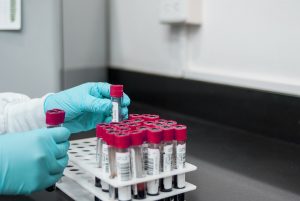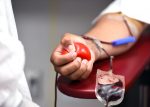
When the history of phlebotomy is in question, it dates back to the ancient Egyptian civilization, and ancient Greek and Roman cultures, when the blood was not taken from the body due to scientific reasons, but to rid the body of “evil spirits” or illnesses.
Draining blood, in ancient times, was believed to be an effective cure that helps the body get rid of most illnesses, and was often performed using a lancet tool.
In 1163, Pope Alexander III actually banned clergymen from performing these procedures, and barbers were those who took over being that they were skilled with sharp objects.
They were known as barber-surgeons.
They were in charge of these health-related tasks such as treating wounds and bone setting.
The red and white barber poles you can see nowadays are a symbol of the bloodletting procedures, where the red symbolizes the blood and the white symbolizes the bandages used to stop the bleeding.
“Bloodletting” first came to the United States with the Pilgrims during the 18th century.
What they have done is draining one to four pints of blood from the patient, until the moment the patient began to feel faint.
As you have probably concluded, too much blood was taken from the body making this a risky procedure.
The consequences of these bloodletting procedures were fatal, as it was the reported case of the first President of the United States.
Famous Historical Bloodlettings
Actually, what happened is that George Washington was a victim of a botched bloodletting procedure, being that nine pints of blood were drained from him.
Washington was suffering from a severe throat infection and this was the reason for the bloodletting procedure.
After they reported his death, people could easily conclude that it was not the actual illness that killed him.
There were other similar unfortunate instances that gave bloodletting a bad reputation.
Furthermore, in 1685, England’s King Charles II suffered a seizure and his physicians decided to remove 24 ounces of blood from his arm and neck so as to save him.
Unfortunately, the King eventually died a few days later.
Modern Phlebotomy
When we consider modern phlebotomy, bloodletting does no longer exists, except in cases of extremely rare diseases.
Phlebotomy is a science nowadays, and so as to practice it, one must receive formal education at an accredited phlebotomy school or certification in phlebotomy.
Plus, phlebotomy procedures can only be practiced in safe environments such as hospitals, doctor’s offices, and medical clinics.
If we go back to the 5th century, B.C. the local barbershop was the place where people used to go for a haircut, a dental procedure, even a bloodletting.
That is considered unbelievable and frightening to anyone today.
Actually, primitive methods were used to remove blood from the body, as they knew very little about the procedures they were trying to perform.
Everything has changed today as phlebotomy is done using sanitary equipment to ensure the safety of the patients.
Even when voluntarily donating blood today, the donor should not be put at risk for any health issues.
Nowadays, phlebotomists are educated to only draw enough blood from the vein to ensure an adequate amount is collected for the medical testing procedure.
After they pass the required training, phlebotomists can make this experience relatively painless.
All this proves that the science of medical phlebotomy has changed a lot from ancient Egyptian times and today is definitely a safe procedure.








